Discovering a dog tumor or unusual lump on your Golden Retriever can be one of the most anxiety-provoking moments for any pet owner. The question “dogs lumps when is it cancer” immediately comes to mind, creating worry and uncertainty about your beloved companion’s health and future wellbeing.
Understanding how to identify a dog tumor versus benign lumps is crucial knowledge for Golden Retriever owners, as this breed faces higher cancer risks than many others. Early detection of cancerous lumps can significantly impact treatment success and quality of life outcomes, making this information potentially life-saving for your furry family member.
This comprehensive guide provides practical insights into recognizing when dogs lumps when is it cancer becomes a legitimate concern, offering Golden Retriever owners the knowledge needed to make informed decisions about veterinary care, diagnostic testing, and treatment options when suspicious lumps are discovered.
Contents
- 1 Understanding Dog Tumors in Golden Retrievers
- 2 Identifying Suspicious Dog Tumor Characteristics
- 3 Common Locations for Dog Tumors
- 4 Dogs Lumps When Is It Cancer
- 5 Diagnostic Procedures for Dog Tumors
- 6 Treatment Options for Dog Tumors
- 7 Prevention and Early Detection Strategies
- 8 Living with a Golden Retriever Cancer Diagnosis
- 8.1 Treatment Decision Making
- 8.2 Quality of Life Management
- 8.3 How can I tell the difference between a benign lump and a dog tumor?
- 8.4 What size lump should I be worried about on my Golden Retriever?
- 8.5 How quickly do cancerous tumors grow in Golden Retrievers?
- 8.6 Can Golden Retrievers get multiple tumors at the same time?
- 8.7 What are the most common types of dog tumors in Golden Retrievers?
- 8.8 Is every hard lump on my dog cancerous?
- 8.9 How much does dog tumor diagnosis and treatment cost?
- 8.10 Can diet or supplements prevent dog tumors in Golden Retrievers?
- 9 Final Thoughts
Understanding Dog Tumors in Golden Retrievers
Golden Retrievers unfortunately rank among the breeds with the highest cancer incidence rates, with studies showing that approximately 60% of Golden Retrievers will develop some form of cancer during their lifetime. This genetic predisposition makes understanding dog tumor characteristics particularly important for breed enthusiasts and loving families.
A dog tumor represents an abnormal growth of cells that can be either benign (non-cancerous) or malignant (cancerous). The challenge for Golden Retriever owners lies in distinguishing between harmless lumps and potentially dangerous cancerous growths that require immediate veterinary attention and treatment.
The most common types of tumors affecting Golden Retrievers include mast cell tumors, lipomas, sebaceous cysts, histiocytomas, and various sarcomas. Each type presents with different characteristics, growth patterns, and treatment requirements, making professional evaluation essential for accurate diagnosis and appropriate care planning.
Location, size, texture, mobility, and growth rate all provide important clues when trying to determine dogs lumps when is it cancer. However, visual and physical examination alone can not definitively diagnose cancer, making veterinary consultation and diagnostic testing crucial for any concerning lumps or growths.
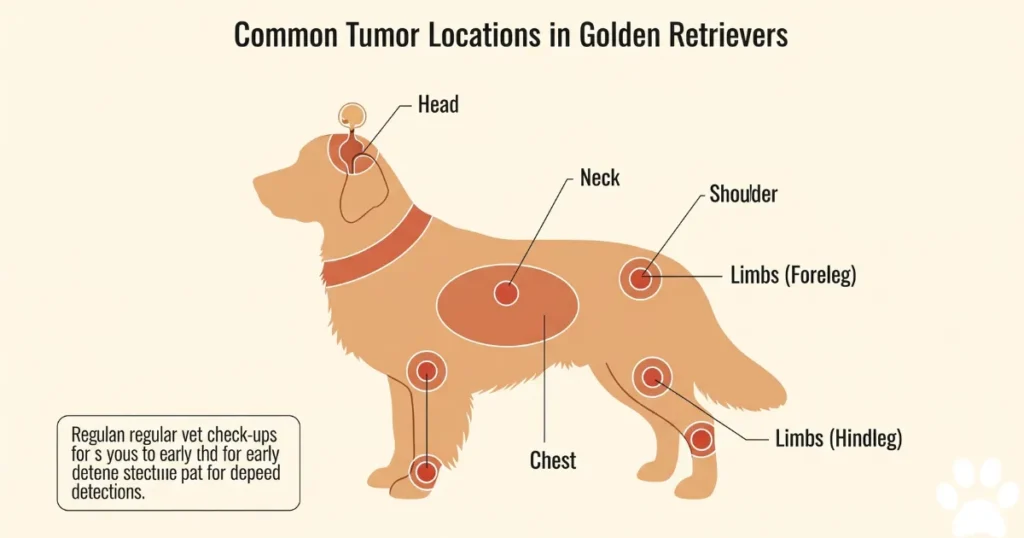
Identifying Suspicious Dog Tumor Characteristics
Physical Appearance and Texture
When examining potential dog tumor sites on your Golden Retriever, certain physical characteristics may indicate a higher likelihood of malignancy. Understanding these warning signs of cancer helps owners make informed decisions about veterinary consultation and diagnostic testing timelines.
Suspicious tumor characteristics include:
- Irregular or asymmetrical shapes with uneven borders
- Hard, firm texture that feels different from surrounding tissue
- Ulceration, bleeding, or discharge from the growth site
- Color changes or variations within a single lump
- Surface irregularities or a rough, bumpy texture
- Attachment to underlying tissues that limits mobility
Benign lumps typically feel soft, moveable, and well-defined, while malignant tumors often feel firm, fixed, and irregular. However, these characteristics aren’t foolproof indicators, as some cancerous tumors can feel soft and some benign lumps may feel firm, making professional evaluation essential.
Size and Growth Patterns
The size and growth rate of a dog tumor provide crucial information about potential malignancy. Rapid growth, significant size changes, or development of multiple lumps in a short timeframe often warrant immediate veterinary attention and diagnostic evaluation.
Concerning growth patterns include:
- Rapid size increases over days or weeks
- Lumps that grow larger than a golf ball
- Development of multiple lumps in different body regions
- Growth that continues despite treatment attempts
- Lumps that shrink and grow repeatedly
- New lumps appearing near existing growths
Golden Retrievers can develop benign lipomas (fatty tumors) that grow quite large but remain harmless. However, any rapidly growing lump should be evaluated promptly, as aggressive cancers can double in size within weeks and require immediate intervention for optimal treatment outcomes.
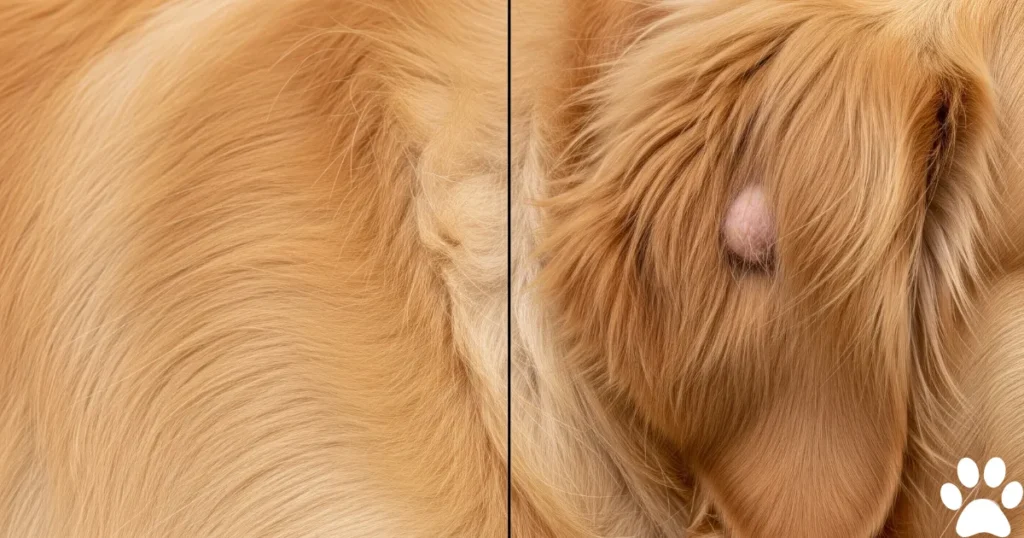
Common Locations for Dog Tumors
Head and Neck Region
The head and neck area represents a common location for dog tumor development in Golden Retrievers, with various cancer types affecting this region due to sun exposure, genetic factors, and the presence of numerous lymph nodes that can become involved in metastatic disease.
Common head and neck tumor locations include:
- Ear flaps and ear canals
- Eyelids and areas around the eyes
- Nose and muzzle regions
- Lips and gum tissue
- Neck and throat areas where lymph nodes are located
- Skull and facial bone regions
Tumors in this region can affect eating, breathing, vision, or hearing, making early detection and treatment particularly important for maintaining quality of life. Any persistent lumps, sores, or growths in the head and neck area should receive prompt veterinary evaluation.
Body and Limb Areas
The trunk and limbs of Golden Retrievers commonly develop various types of dog tumor, ranging from benign fatty tumors to aggressive sarcomas that require immediate attention. These areas can be challenging for owners to examine regularly, making systematic checking important.
Body and limb tumor locations include:
- Chest and abdominal regions
- Back and sides of the torso
- Legs, particularly near joints
- Paw pads and areas between toes
- Tail and base of tail regions
- Armpit and groin areas where lymph nodes cluster
Regular grooming sessions provide excellent opportunities to check these areas for new lumps or changes in existing growths. Pay particular attention to areas where harnesses, collars, or leashes create friction, as chronic irritation can sometimes contribute to tumor development.

Dogs Lumps When Is It Cancer
Red Flag Characteristics
Determining dogs lumps when is it cancer requires understanding specific characteristics that increase the likelihood of malignancy. While only veterinary examination and diagnostic testing can provide definitive answers, certain features warrant immediate professional evaluation.
Cancer red flags include:
- Lumps that appear suddenly and grow rapidly
- Growths that feel hard, irregular, or firmly attached
- Lumps that bleed, ulcerate, or produce discharge
- Multiple lumps appearing simultaneously in different areas
- Growths that cause obvious discomfort or pain
- Lumps associated with other symptoms like lethargy or appetite loss
These characteristics don’t guarantee cancer, but they indicate higher risk levels that justify prompt veterinary consultation and potentially urgent diagnostic testing to rule out malignancy and begin appropriate treatment if necessary.
Timing Considerations for Veterinary Evaluation
The question dogs lumps when is it cancer often involves timing decisions about when to seek veterinary care versus monitoring at home. Understanding appropriate timelines helps ensure early detection while avoiding unnecessary anxiety about benign conditions.
Immediate veterinary care is warranted for:
- Any lump that doubles in size within two weeks
- Growths that bleed, ulcerate, or become infected
- Lumps that cause obvious pain or discomfort
- Multiple new lumps appearing simultaneously
- Any growth larger than a walnut
- Lumps accompanied by other illness symptoms
For smaller, soft, moveable lumps, monitoring for 1-2 weeks while scheduling routine veterinary evaluation is often appropriate. However, when in doubt, earlier consultation provides peace of mind and ensures optimal treatment timing if cancer is present.
Diagnostic Procedures for Dog Tumors
Initial Veterinary Assessment
When veterinarians evaluate a suspected dog tumor, the diagnostic process typically begins with thorough physical examination and detailed history taking to understand the lump’s development, growth pattern, and associated symptoms in your Golden Retriever.
The initial assessment includes:
- Complete physical examination including lymph node palpation
- Detailed history of the lump’s appearance and development
- Photography for documentation and monitoring purposes
- Measurement and description of size, texture, and mobility
- Assessment of your dog’s overall health and body condition
- Discussion of breed-specific cancer risks and genetic factors
This initial evaluation helps veterinarians determine appropriate next steps, which might include immediate diagnostic testing, short-term monitoring, or urgent referral to veterinary oncology specialists depending on the lump’s characteristics and associated risk factors.
Advanced Diagnostic Testing
Determining dogs lumps when is it cancer often requires advanced diagnostic procedures that provide cellular or tissue-level information about the growth. These tests help distinguish between benign and malignant conditions while guiding appropriate treatment decisions.
Common diagnostic procedures include:
- Fine needle aspiration (FNA) for cellular examination
- Core needle biopsy for larger tissue samples
- Surgical biopsy for definitive diagnosis
- Imaging studies (X-rays, ultrasound, CT scans) to assess extent
- Blood work to evaluate overall health and organ function
- Specialized staining techniques for tumor classification
The choice of diagnostic approach depends on factors including lump size, location, characteristics, and your dog’s overall health status. Some procedures can be performed in general veterinary practices, while others may require referral to specialty centers.
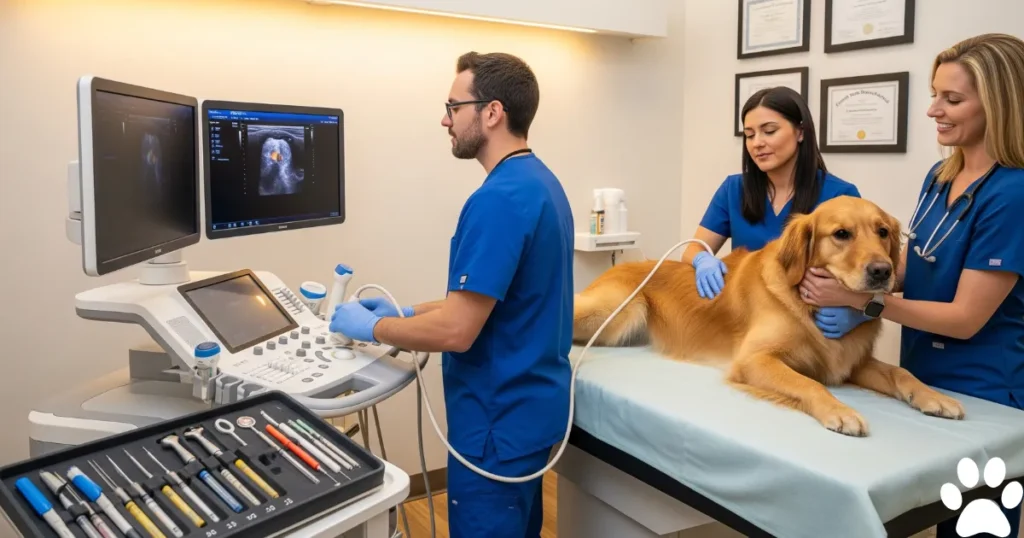
Treatment Options for Dog Tumors
Surgical Interventions
Surgery represents the primary treatment for most dog tumor cases, particularly when early detection allows for complete removal with wide margins of healthy tissue. Surgical success rates are generally highest when tumors are caught early and haven’t spread to other areas.
Surgical options include:
- Wide excision with clean margins for localized tumors
- Lymph node removal if cancer has spread regionally
- Reconstructive procedures for large defects
- Palliative surgery for comfort when cure isn’t possible
- Staging procedures to determine extent of disease
- Prophylactic surgery for high-risk benign tumors
Golden Retrievers generally tolerate surgery well, though age, overall health, and tumor location influence surgical risks and recovery expectations. Post-surgical care and monitoring help ensure optimal healing and early detection of any complications or recurrence.
Non-Surgical Treatment Methods
Some dog tumor cases may benefit from non-surgical treatments, either as primary therapy or in combination with surgical intervention. These approaches can be particularly valuable for tumors that aren’t good surgical candidates or when owners prefer less invasive options.
Non-surgical treatments include:
- Radiation therapy for tumors in difficult surgical locations
- Chemotherapy for systemic or metastatic disease
- Targeted drug therapies for specific tumor types
- Immunotherapy to stimulate the body’s cancer-fighting abilities
- Cryotherapy (freezing) for small, superficial tumors
- Photodynamic therapy using light-activated drugs
Treatment selection depends on tumor type, stage, location, and your Golden Retriever’s overall health status. Many dogs tolerate these treatments well, though side effects and response rates vary depending on the specific approach used.
Prevention and Early Detection Strategies
Regular Home Examinations
Preventing advanced dog tumor development requires consistent home monitoring that allows for early detection when treatment outcomes are most favorable. Establishing regular examination routines helps identify new lumps or changes in existing growths before they become problematic.
Effective home examination includes:
- Weekly full-body checks during grooming sessions
- Systematic approach covering all body regions
- Attention to areas where tumors commonly develop
- Documentation of any new lumps or changes in existing ones
- Photography of suspicious areas for veterinary consultation
- Monitoring of your dog’s general health and behavior
Golden Retrievers typically enjoy gentle handling and massage, making these examinations pleasant bonding experiences rather than stressful medical procedures. Consistency in timing and approach helps establish baseline knowledge of your dog’s normal anatomy and appearance.

Professional Monitoring and Screening
Regular veterinary examinations provide professional expertise in dog tumor detection and evaluation, often identifying concerning changes that owners might miss during home examinations. These visits also allow for discussion of breed-specific risks and prevention strategies.
Professional monitoring includes:
- Annual wellness examinations for younger Golden Retrievers
- Bi-annual examinations for senior dogs over seven years
- Prompt evaluation of any owner-detected lumps or changes
- Breed-specific cancer screening protocols when available
- Discussion of genetic testing options for cancer predisposition
- Guidance on environmental risk factor reduction
Early detection through regular professional monitoring significantly improves treatment outcomes for most dog tumor types, making these examinations valuable investments in your Golden Retriever’s long-term health and wellbeing.
Living with a Golden Retriever Cancer Diagnosis
Treatment Decision Making
When facing a dog tumor diagnosis in your Golden Retriever, making informed treatment decisions requires understanding available options, potential outcomes, and quality of life considerations. These decisions should reflect your dog’s individual circumstances and your family’s values and resources.
Treatment considerations include:
- Tumor type, stage, and expected progression
- Your dog’s age, health status, and life expectancy
- Treatment costs and ongoing care requirements
- Quality of life impact during and after treatment
- Family preferences and lifestyle factors
- Available veterinary resources and expertise
Working closely with your veterinary team helps ensure that treatment decisions align with your dog’s best interests while considering practical factors that affect implementation and success of chosen approaches.
Quality of Life Management
Managing quality of life for Golden Retrievers with dog tumor diagnoses involves balancing cancer treatment with comfort, activity, and normal routines that contribute to emotional wellbeing and family bonds during this challenging time.
Quality of life factors include:
- Pain management and comfort measures
- Maintaining normal activities as much as possible
- Nutritional support and appetite stimulation
- Environmental modifications to accommodate limitations
- Emotional support and companionship
- Monitoring for treatment side effects or disease progression
Many Golden Retrievers maintain good quality of life during cancer treatment, continuing to enjoy family interactions, gentle exercise, and favorite activities while receiving appropriate medical care for their condition.
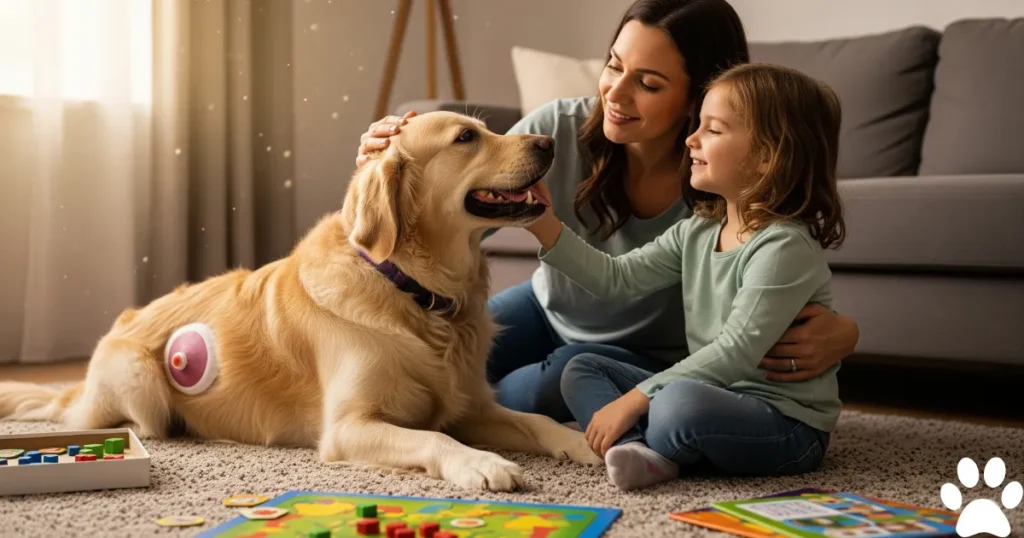
How can I tell the difference between a benign lump and a dog tumor?
While only veterinary examination can definitively determine dogs lumps when is it cancer, benign lumps typically feel soft, moveable, and well-defined, while malignant dog tumor growths often feel firm, fixed, and irregular. However, some cancerous tumors can feel soft, making professional evaluation essential for any concerning lump.
What size lump should I be worried about on my Golden Retriever?
Any dog tumor larger than a marble warrants veterinary evaluation, though size alone doesn’t determine malignancy. More importantly, watch for rapid growth, irregular shape, firm texture, or other concerning characteristics that suggest dogs lumps when is it cancer becomes a legitimate concern.
How quickly do cancerous tumors grow in Golden Retrievers?
Aggressive dog tumor types can double in size within 1-2 weeks, while slower-growing cancers may take months to show significant changes. Any lump that grows noticeably within two weeks should receive immediate veterinary attention to rule out aggressive cancer types.
Can Golden Retrievers get multiple tumors at the same time?
Yes, Golden Retrievers can develop multiple dog tumor growths simultaneously, either of the same type or different cancer varieties. This breed’s genetic predisposition to cancer increases the risk of developing multiple tumors throughout their lifetime, making regular monitoring crucial.
What are the most common types of dog tumors in Golden Retrievers?
The most common dog tumor types in Golden Retrievers include mast cell tumors, lipomas (fatty tumors), hemangiosarcomas, lymphomas, and osteosarcomas. Understanding dogs lumps when is it cancer involves recognizing that each type has different characteristics and treatment requirements.
Is every hard lump on my dog cancerous?
Not every hard lump represents a malignant dog tumor. Some benign conditions like sebaceous cysts, granulomas, or scar tissue can feel firm. However, hard lumps have higher cancer risk than soft ones, making veterinary evaluation important for proper diagnosis and peace of mind.
How much does dog tumor diagnosis and treatment cost?
Dog tumor diagnosis typically costs $200-800 depending on tests needed, while treatment costs vary widely from $500-5000+ based on tumor type, treatment approach, and complexity. Pet insurance, payment plans, and veterinary financing can help manage costs for necessary care.
Can diet or supplements prevent dog tumors in Golden Retrievers?
While no diet can guarantee prevention of dog tumor development, maintaining optimal nutrition, healthy weight, and providing antioxidant-rich foods may support immune function. However, genetic factors play the largest role in Golden Retriever cancer risk, making early detection more important than prevention strategies.
Final Thoughts
Understanding dog tumor recognition and knowing when dogs lumps when is it cancer becomes a serious concern empowers Golden Retriever owners to provide the best possible care for their beloved companions. Early detection through regular monitoring and prompt veterinary evaluation significantly improves treatment outcomes for most cancer types.
Remember that not every lump indicates cancer, but Golden Retrievers’ genetic predisposition makes vigilant monitoring essential throughout their lives. Trust your instincts when you notice changes, and don’t hesitate to seek professional evaluation for any concerning growths or symptoms.
The key to successful dog tumor management lies in balancing awareness with appropriate action. Regular home examinations, prompt veterinary care for suspicious lumps, and open communication with your veterinary team create the foundation for early detection and effective treatment when cancer does occur.
While facing a dog tumor diagnosis can be frightening, many Golden Retrievers live happy, healthy lives during and after cancer treatment. Focus on providing love, comfort, and appropriate medical care while cherishing the special bond you share with your four-legged family member throughout this journey.
Dr. Nabeel A.
Hi, I’m Dr. Nabeel Akram – a farm management professional by trade and a passionate Golden Retriever enthusiast at heart. With years of experience in animal science and livestock care, I’ve built a career around understanding animals—how they live, thrive, and bring value to our lives. This blog is a personal project born from that same passion, focusing on one of the most loyal and lovable breeds out there: the Golden Retriever. Whether I’m managing farm operations or sharing insights on canine health, behavior, and care, it all ties back to one core belief—animals deserve thoughtful, informed, and compassionate attention. Welcome to a space where professional expertise meets genuine love for dogs.
Facebook |
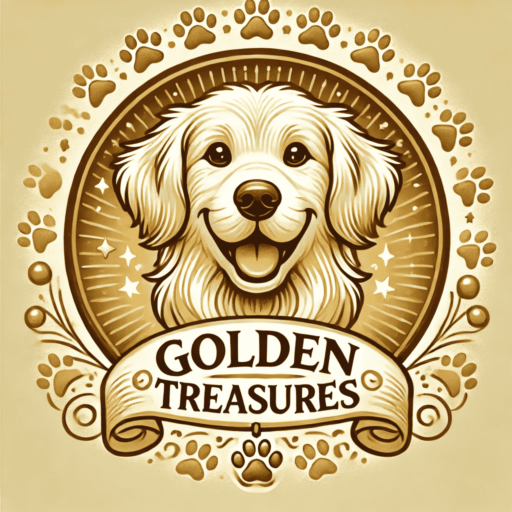
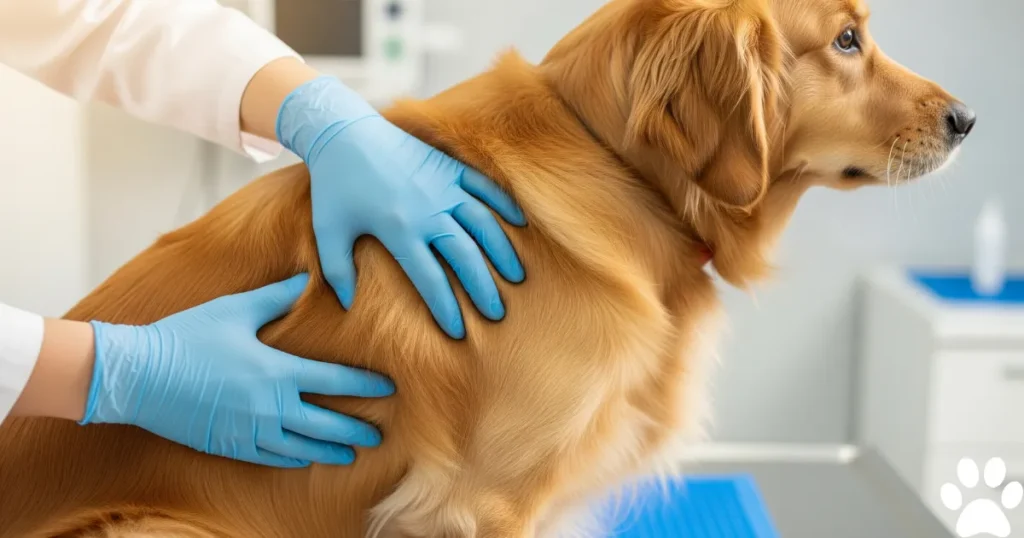
Links will be automatically removed from comments.